- NEED HELP? CALL US NOW
- +919995411505
- [email protected]
Impaction
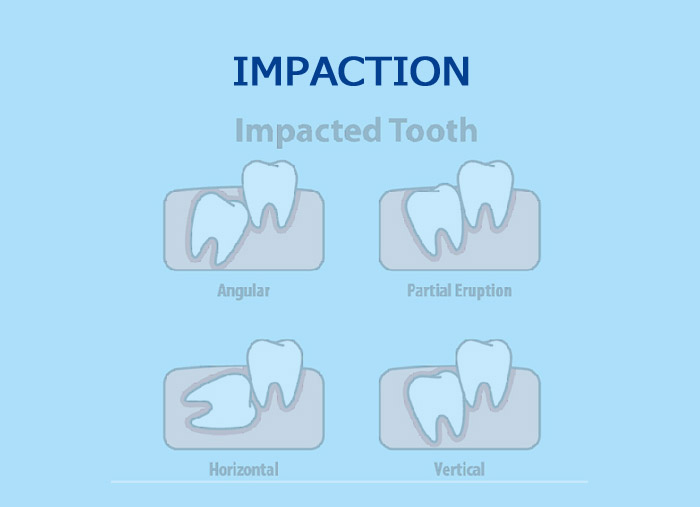
A tooth which is completely or partially unerupted, is positioned against another tooth, bone or soft tissue so that its further eruption is unlikely and described according to its anatomic position.
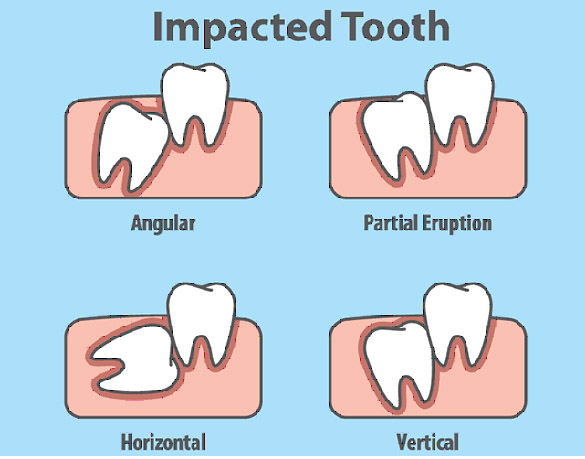
Frequency of impaction :
Local causes:
Prenatal causes: Heredity
Postnatal causes:
Rare conditions:
1. Based on the nature of the overlying tissue: A. Soft tissue impaction: The presence of dense fibrous tissues overlying the teeth sometimes prevents its normal eruption. This is frequently seen in cases of permanent central incisors, in which early loss of primary teeth with subsequent masticatory trauma to the ridge results in fibrosis.
B. Hard tissue impaction: When the teeth fail to erupt due to obstruction caused by the overlying bone, it is known as hard tissue impaction. Here the impacted tooth is completely encased in bone so that, when the soft tissue flap is reflected , the tooth is not visible. Extensive amount of bone must be removed and the tooth may require sectioning before removal (odontectomy)
2. Winter's classification
3. Pell and Gregory's classification
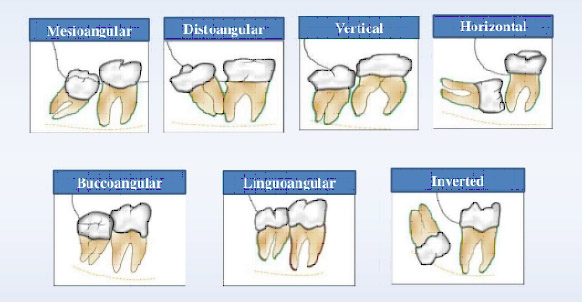

Frequency of impaction :
- Mandibular 3rd molar
- Maxillary 3rd molar
- Maxillary cuspids
- Mandibular bicuspids
- Mandibular cuspids
- Maxillary bicuspids
- Maxillary central incisors
- Maxillary lateral incisors
Local causes:
- Irregularity in position and pressure of adjacent tooth
- Density of overlying or surrounding bone
- Localised chronic inflammation with resultant increase in density of the overlying mucous membrane
- Lack of space due to underdeveloped jaws. Arch length and tooth size discrepancy.
- Dilaceration
- Over retained deciduous teeth
- Ectopic position of tooth bud
Prenatal causes: Heredity
Postnatal causes:
- Rickets
- Anaemia
- Congenital syphilis
- Tuberculosis
- Endocrine dysfunction
- Malnutrition
Rare conditions:
- Cleidocranial dysostosis
- Oxycephaly
- Progeria
- Osteopetrosis
- Cleft palate
- Fracture of the mandible
- Atypical pain
1. Based on the nature of the overlying tissue: A. Soft tissue impaction: The presence of dense fibrous tissues overlying the teeth sometimes prevents its normal eruption. This is frequently seen in cases of permanent central incisors, in which early loss of primary teeth with subsequent masticatory trauma to the ridge results in fibrosis.
B. Hard tissue impaction: When the teeth fail to erupt due to obstruction caused by the overlying bone, it is known as hard tissue impaction. Here the impacted tooth is completely encased in bone so that, when the soft tissue flap is reflected , the tooth is not visible. Extensive amount of bone must be removed and the tooth may require sectioning before removal (odontectomy)
2. Winter's classification
3. Pell and Gregory's classification

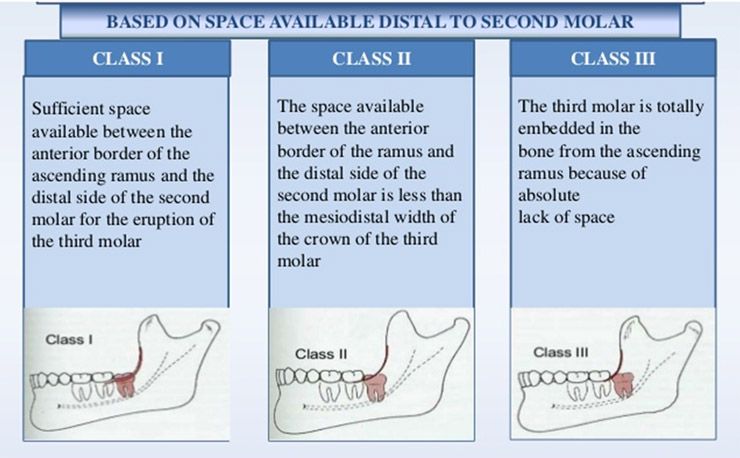
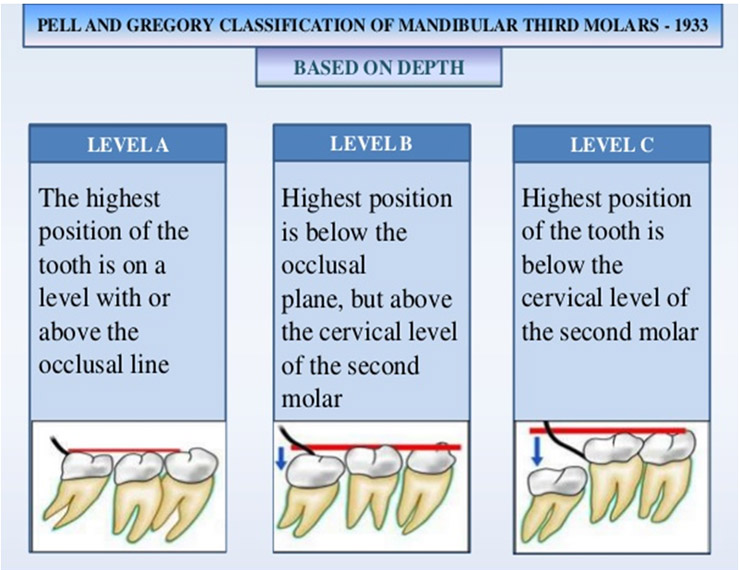
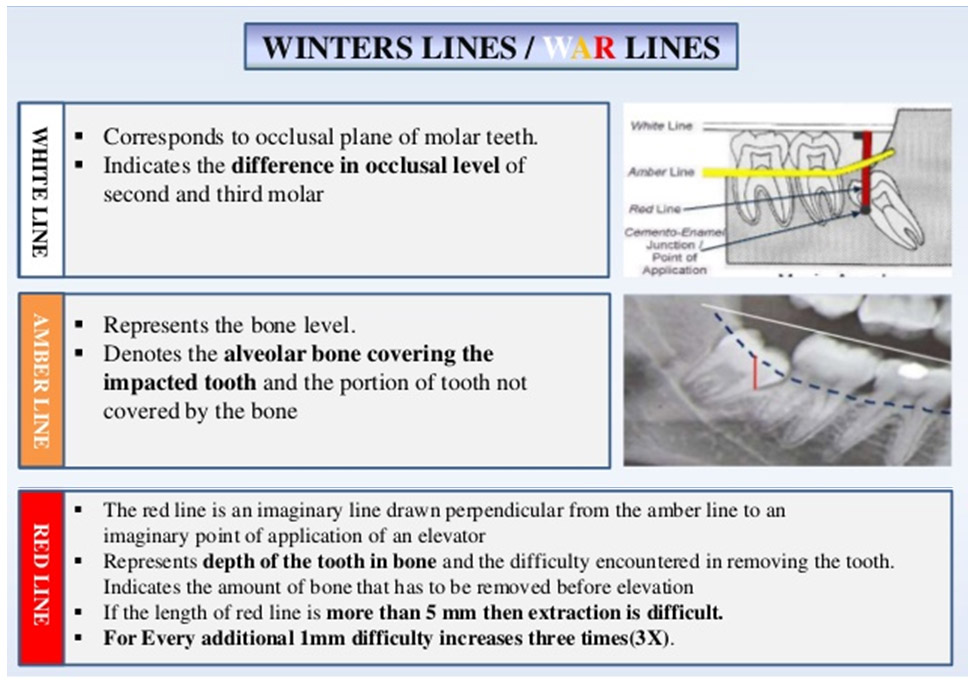
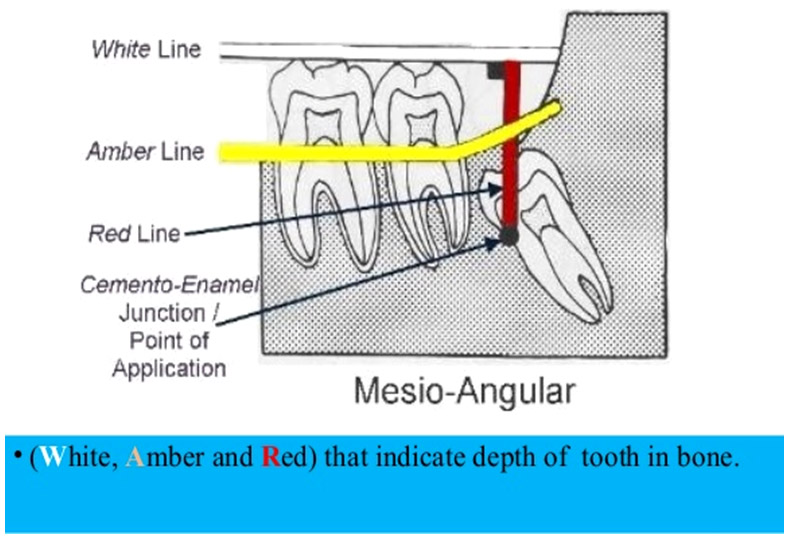
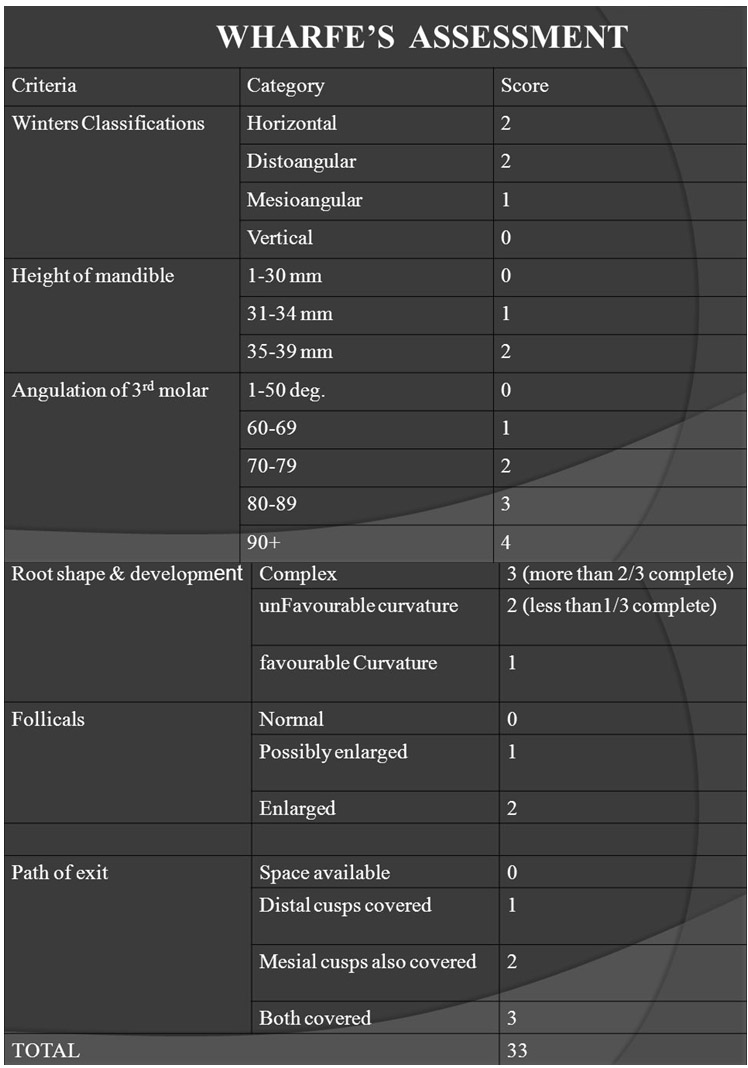
Related posts
April 10, 2025
April 9, 2025
April 4, 2025




